Graham ‘Polly’ Farmer first Aussie rules player diagnosed with CTE
The AFL’s refusal to accept the link between repetitive collisions to long-term brain impairment has been exposed, campaigner Peter Jess says. It comes after late football legend Graham “Polly Farmer” was diagnosed with a crippling neurological disorder caused by head knocks.
Football great Graham “Polly” Farmer has become the first Australian rules player to be diagnosed with chronic traumatic encephalopathy — the crippling neurological disorder caused by repeated head knocks.
The diagnosis of Stage III CTE was confirmed after tissue from his brain was analysed at Sydney’s Royal Prince Alfred Hospital late last year.
Medical experts believe the devastating condition is caused by repeated head or subconcussive knocks over many years.
And concussion crusader Peter Jess said the AFL’s “continual refusal to accept the causal relationship between repetitive collisions and long-term neurological impairment” has been exposed.

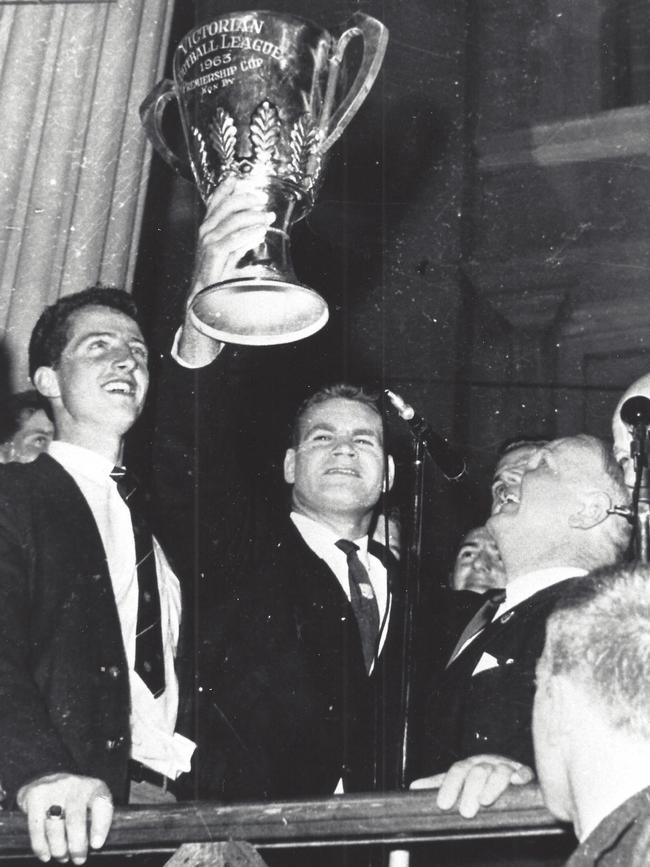
Jess, the driver behind a proposed Federal Court concussion damages class action involving more than 100 past AFL players, said the “Polly” Farmer bombshell came as no surprise to those who have been sounding the alarm for decades.
“We knew from the science that it was only a matter of time before we would have confirmation that CTE was and is a product of AFL football,” Jess said this morning.
“This is no surprise to anybody who has been involved in the ongoing research into the long-term impacts of concussions in collision sports.
“The tragedy of the disease is that nobody can tell that you have CTE until between 20 and 30 years after the event.

“It is such a long burn in the neuro-degeneration that it is incumbent on the peak bodies — in this case the AFL — to now focus on prevention and mitigation strategies so that the next generation do not present with this insidious disease.”
The Federal Court concussion damages case has been stalled by a damning lack of medical records at AFL clubs from retired players.
Clubs are free to destroy medical records after just seven years under current laws.
But Jess said the case would be prosecuted unless the AFL agreed to “sensible negotiations about compensation for the approximate 6500 past players likely to be suffering long-term neurological damage”.
“In the presentations that I am now seeing in both the current and past cohort of players, it is inevitable that many of them already have the precursor to CTE,” he said.
“My fear is that because of the lack of research and intervention by the AFL, we will see the ongoing paradigm of CTE in future generations of footballers — men’s and women’s.”
Farmer died last year after a long battle with Alzheimer’s disease, but a report released overnight in the online medical journal Acta Neuropathologica Communications confirmed his CTE diagnosis and sheds new light on the football legend’s suffering over two decades.
The Farmer family confirmed to the Herald Sun that the person researched in the report, dubbed case number 19H208 FARMER, was the football icon.
FARMER’S CASE WAS MOST SEVERE CTE DIAGNOSIS
Associate Professor Michael Buckland, head of RPAH’s department of neuropathology and founding director of the Australian Sports Brain Bank, said Farmer’s case was the most severe CTE diagnosis he had seen.
“It was first slide under the microscope and wow, here it (CTE) is,” Professor Buckland said.
“In this case the CTE change was severe and Alzheimer’s disease was at an intermediate level.”
CTE can only be diagnosed after death.
Professor Buckland has previously diagnosed CTE in three former rugby league players, including Canterbury star and coach Steve Folkes, ex Eastern Suburbs hooker Charles “Peter” Moscatt, as well as a boxer.
Another former rugby player, Barry “Tizza” Taylor, was diagnosed with CTE at the Brain Bank in Boston.
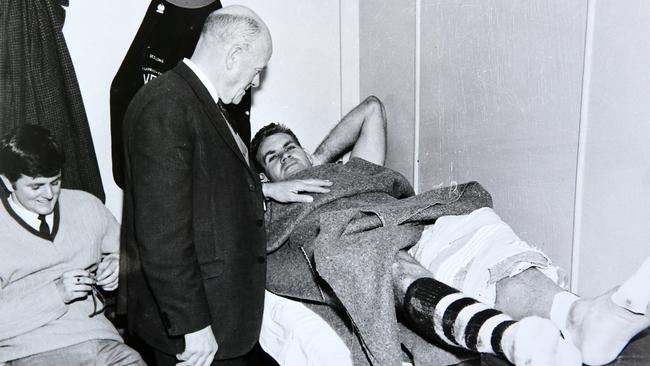
Farmer’s diagnosis takes the tally to five but Professor Buckland said there were “more in the pipeline”.
CTE symptoms include memory loss, confusion, impaired judgment, impulse control problems, depression, anxiety and often begin years or even decades after the last brain trauma.
Premier Daniel Andrews said today that player welfare was “very, very important”.
“I think this is a timely reminder that the AFL, the AFLPA, all of us - and particularly now with AFLW — this is everybody’s business now, we’ve all got a stake in this to make sure player welfare and safety is foremost in terms of the way those who govern the game do their important work,” Mr Andrews said.
“I’d be confident the AFL gets that, and they’ll do what needs to be done.”
FAMILY’S DIFFICULT DECISION
Farmer’s children, Kim, Dean and Brett, made the difficult decision to allow their father’s brain to be tested in the hope it would shed some light on CTE and provide one final legacy.
“It’s the fifth quarter,” Kim said.
“We all had an opportunity to say goodbye. Once he was gone we did have enough space to consider the enormity of it.
“We had to consider what it (a CTE finding) would mean to any young person considering playing contact sport or any person who has played contact sport … any person who is concerned they may have been impacted by concussion while playing. We just felt what could be gained outweighed any other considerations.”
The six-time premiership player in the WAFL and VFL died last August, aged 84, with hundreds of sports stars, politicians, family and friends attending a state funeral at Perth Stadium.
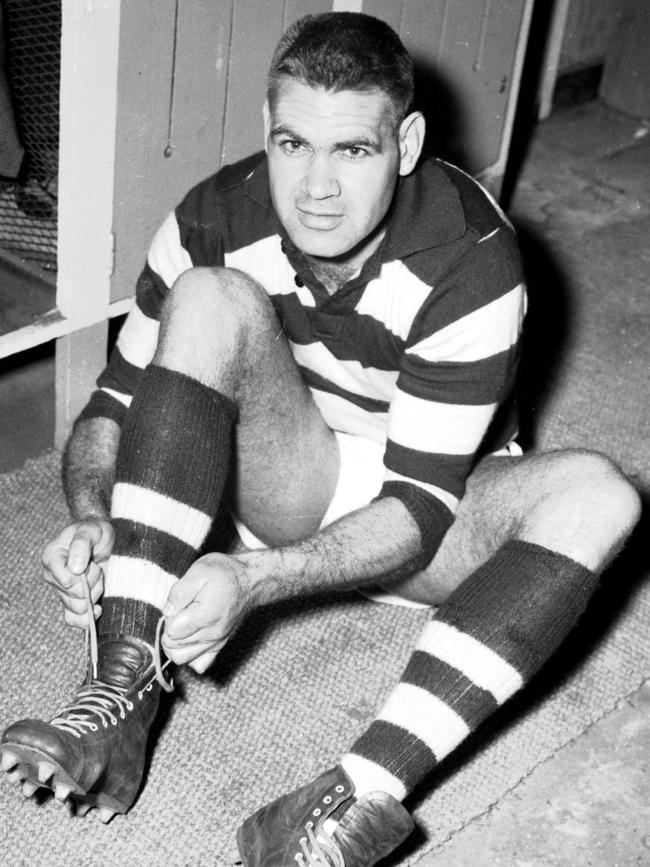
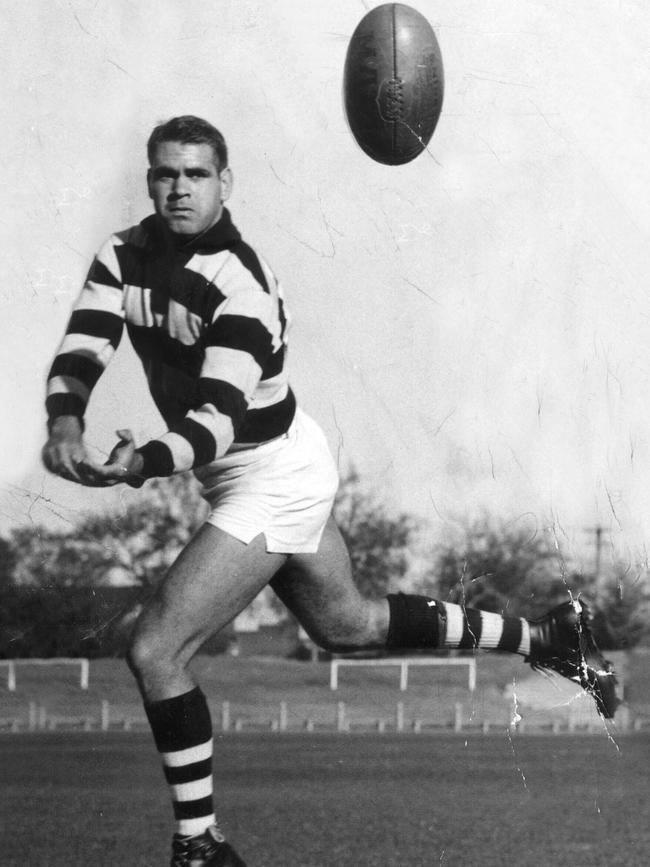
He played close to 400 WAFL, VFL and state games over two decades but both Kim and Brett believe their father never missed a game with concussion.
The AFL and NRL now have strict rules surrounding concussed players but it was a different game last century.
Brett said while the major focus was on concussion he hoped his dad’s final legacy would be to put the spotlight on the harmful effects of repeated smaller or sub-concussive knocks.
“I have got memories of Dad lying on the couch with a bucket and vomiting after games. And it didn’t happen just a few times. That is a sign nowadays that you have got concussion,” Brett said.
“His were undiagnosed concussions … so as well as all the sub-concussive knocks.”
“It happened a couple of times a season in Geelong, I know that.”
Brett hoped his dad’s latest diagnosis would provide the AFL and other contact sports with more information to take preventive measures.
“What I’d hope for is there’ll be less CTE cases in the future,” he said. “Everything these days is all about concussion. But virtually no thought has been put into these sub-concussive hits.”
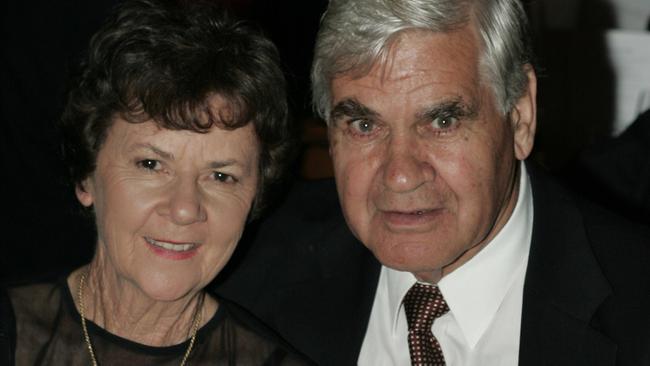
Kim said her father had a “huge threshold for pain”.
“It (contact) was expected and he saw it as an occupational hazard,” she said. “He would just treat it with Dencorub. Dad’s threshold for pain and ability to never focus on it, highlight it or draw attention to it, continued until his death. He never wanted us to know he was suffering.”
Both Kim and Brett said their father’s suffering began in his early 60s.
CTE rose to prominence in 2005 when a paper was published in the US on the brain of former Pittsburgh Steelers centre Mike Webster, who died in 2002.
Webster was the first NFL player diagnosed with the disorder.
Dr Bennet Omalu, a forensic neuropathologist, examined tissue from Webster and eight other NFL players and determined they all showed the same kind of brain damage seen in people diagnosed with Alzheimer’s disease or dementia.
There were estimations Webster had been subjected to the equivalent of “25,000 automobile crashes” in 25 years of playing football at high school, college and in the NFL.
In 2011, 4500 retired players brought a class action against the NFL.
The NFL has already paid out more than $US500 million under the sport’s concussion settlement, a figure tipped to reach the $US1 billion mark.
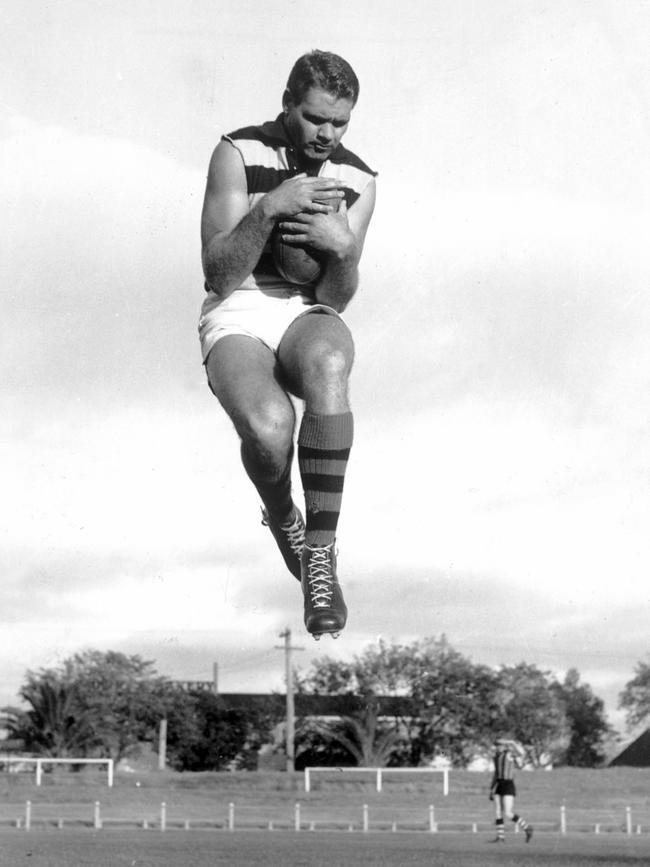
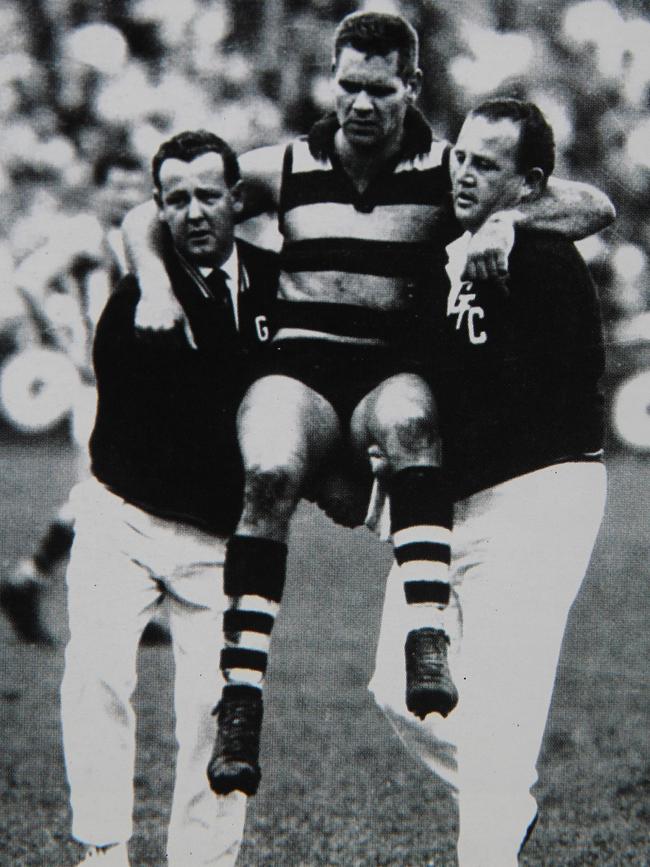
The news will have ramifications for the AFL and its treatment of concussion with a number of retired high-profile players, including Brownlow medallists John Platten and Greg Williams, forward Shaun Smith and ruckman John Barnes building a class action amid claims they are suffering from random seizures, acute memory loss, mood swings and other cognitive issues.
Professor Buckland said while it was likely CTE was caused by long-term exposure to heavy head knocks, there wasn’t always a correlation.
His first analysis of an Australian rules player, South Fremantle rover Ross Grljusich, revealed no CTE signs despite the player suffering multiple concussions in his playing career and dementia before his death.
“The treatment of a single concussion is not necessarily going to affect your risk of getting CTE or not,” he said.
“There is no evidence to suggest that the management of any individual concussion will affect whether or not one will develop CTE.
“Concussion management is important for concussion outcomes, but is not a substitute for independent and specific CTE prevention efforts. I am not aware of any Australian sporting codes implementing CTE prevention efforts like specifically minimising subconcussive head impact exposure.
“It’s like smoking. It’s not the one cigarette that is going to kill you it is the 10 a day over many years.”
‘TARGETED’ FARMER WOULD PLAY THROUGH PAIN
Stories of Graham “Polly” Farmer’s courage were legendary.
Playing hurt was a badge of honour at a time when the unwritten code of conduct was “never complain, never explain”.
But as the best ruckman and arguably the greatest player to ever grace an Australian rules field, Farmer wore a giant target that only got bigger as his influence and legend grew.
The “close attention” of opponents in nearly 400 games over two decades took their toll as the Farmer family reveal today their famous father suffered from both Alzheimer’s disease and chronic traumatic encephalopathy.
Kim kept a note she wrote during a conversation with her dad in the early 2000s when his condition was deteriorating. The subject was how he dealt with setbacks.
“In the early days my greatest problem was lack of experience to know when I was hurt (and) what to do — I only wanted to get back on the field,” was his answer.
That courage would also be a curse later in life as he fought the crippling symptoms of CTE that included memory loss, confusion, impaired judgment, impulse control problems, depression and anxiety.
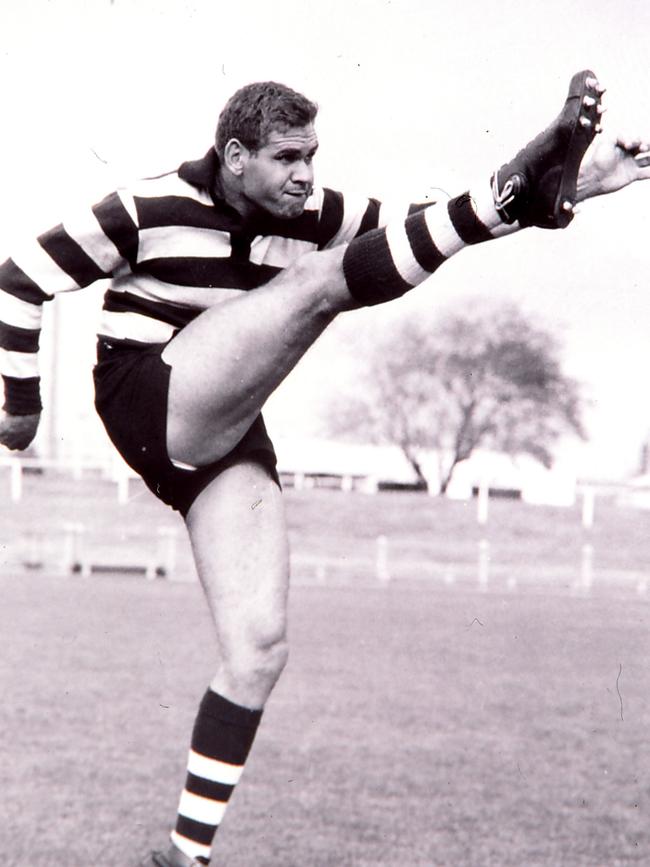
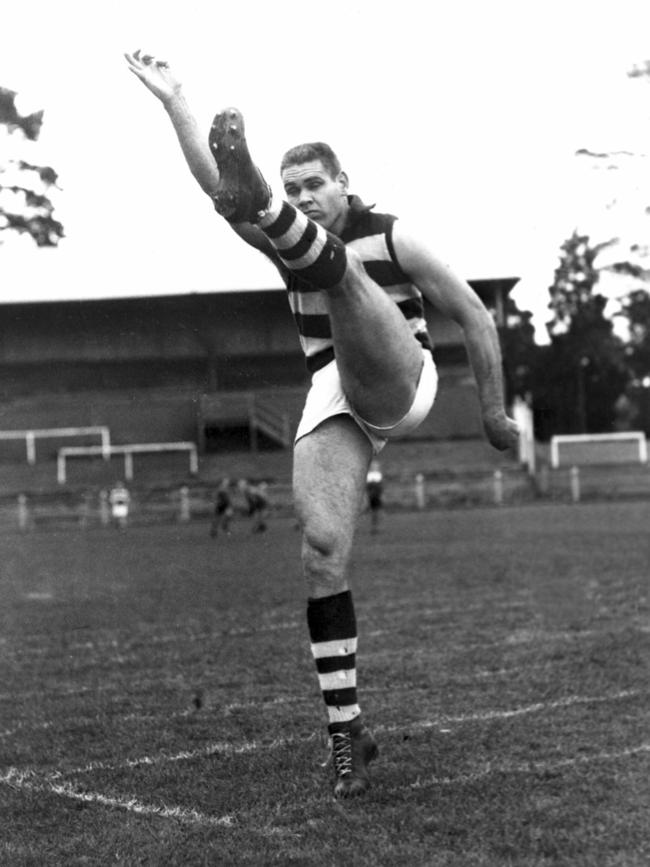
“Talking to some ex-footballers and those who very closely watched the games Dad played, they say they don’t ever remember him being concussed,” Kim said.
“But I know he was concussed because Mum (Marlene) used to tell a story about Dad playing for Geelong when he was on the ground and he was knocked out and a spectator from the other team was giving him a mouthful.
“The thing is, if he went down he would not have put his hand up and said “I need to sit down and get my vision back and get my breath back”.
“He would have got straight up and straight back into the game, back into winning the game. And no one would have known anything else. I have no doubt there were concussions and lots of mini-concussions along the way.”
He said it was just the way the game was played back then when footballers of Farmer’s calibre wore head knocks like badges of courage.
“Ninety-five per cent of them didn’t happen severely on purpose because it was just part of the game,” Brett said.
“You have got to remember, he played in the ruck and in those days … there were no laws about how many people could go up in the ruck.

“You would have thought that teams that were planning to play against ‘Polly’ Farmer would have had a second ruck trying to work out a way to stop him.
“If you play enough games over a period of time with enough people trying to put you off your game, there’s going to be a cost. He just saw it as part and parcel of the game. That was his badge of honour.
“The other thing is before Dad went down to East Perth, he’d already played two years with Ted Kilmurray at Kenwick and Maddington. At around 17 years of age, they had already played two years of senior football.
“Dad would have been 10-and-a-half stone at the time and he would have copped it then, too. Of his 400 games, he basically played four seasons in two seasons against men before he’d turned 17.”
Both Brett and Kim said to their knowledge, their father did not miss a game with concussion.
“I wonder how many players ever did (miss a game with concussion) from his era? I don’t think any did,” Brett said.
“If they could have run out on to the field the next week, they would have, there would have been no reason for them not to. There was no knowledge of CTE back then.
“I can sort of remember the late 1960s and early ’70s and the only time concussion was when someone was carried off on a stretcher unconscious and was still unconscious six hours later. It had to be that severe in that era.”
Kim said: “It’s a contact sport and when you go down, you go down with a huge thud. And Dad was a big man, so when he landed, it was going to be a resounding thud”.
Kim said the family started to recognise Farmer’s decline before he was diagnosed with Alzheimer’s disease at age 64.
“We know now it was probably CTE. When it first emerged it was pretty sudden. It went from Dad just being Dad and there was a really stressful situation that made it really evident. Dad’s demeanour and capacity to regulate his emotions … he was a different man,” she said.
“That was the beginning of us not having the father we knew. He was someone know that we were concerned about.”
Brett said it was hard watching the decline of his dad, his childhood hero.
“It was a long, slow thing. We knew he had it for quite a while,” he said.
“But there was a difficult period where it started to advance. He had a lot of his old faculties and awareness and then had arrived at like a sign post, where he had to face facts like he was not going to be able to drive.
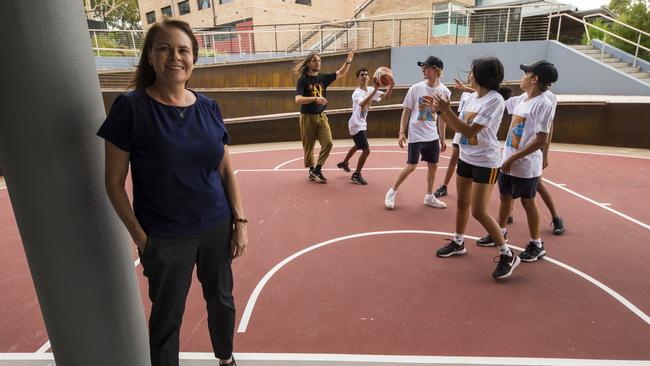
“There would have been a long period where he was aware what was slowly happening to him and he never dropped his lip.”
Kim said it was Brett who first flagged the possibility that their father was suffering from CTE.
“I knew a little bit about what was happening in America with the NFL players,” she said.
“You don’t have to be a rocket scientist to realise when you watch the NFL and see the sustained blows and impact no matter how padded up they are to realise the long-term damage that is happening there.
“Then we look at our Australian rules players and they are not padded up and most aren’t helmeted.”
After their father’s death, the family was approached by associate professor Michael Buckland, head of Sydney’s Royal Prince Alfred Hospital’s department of neuropathology and founding director of the Australian Sports Brain Bank.
“It was difficult but the three of us (Kim, Brett and Dean) agreed that Dad have this final legacy,” Kim said.
“Michael Buckland showed great sensitivity and gentleness. He told us what he was doing at the brain bank and asked us if we would mind having a conversation around this,” she said.
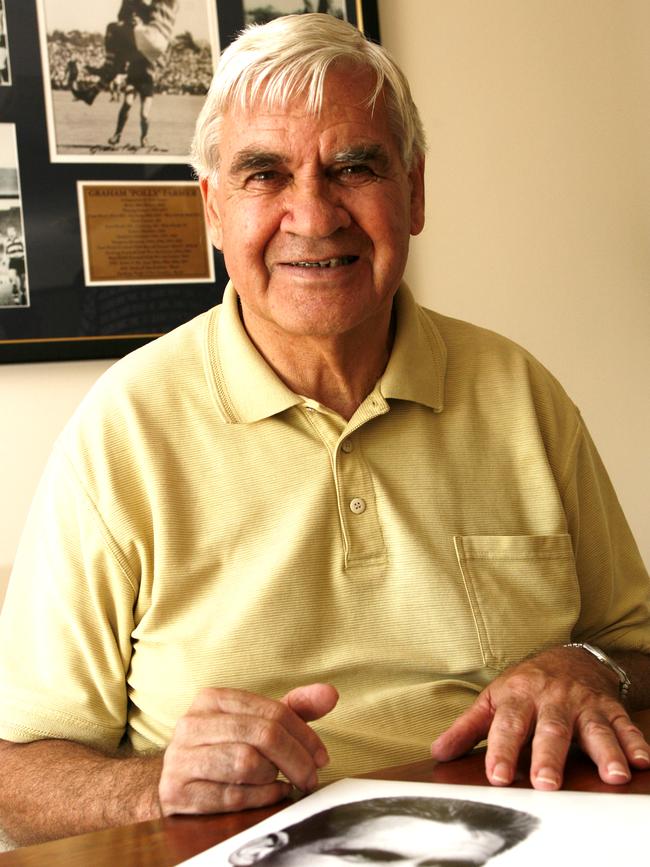
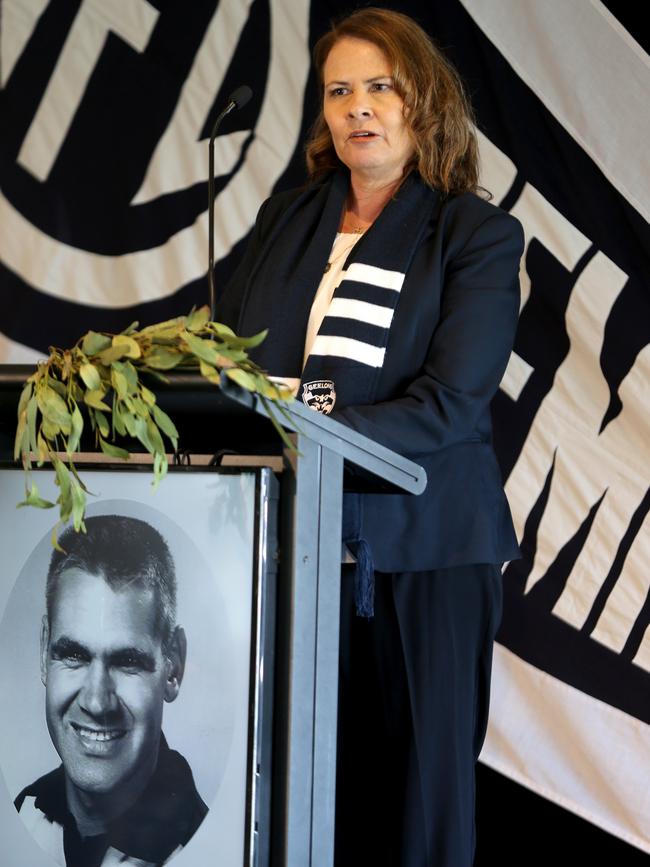
“We unanimously agreed it was the right decision and a good decision.
“For myself, being so proud of dad’s legacies. Of course I am enormously proud of what he did on the field, but there is also his legacy with the Polly Farmer Foundation.
“I don’t think he will be remembered (only) for this legacy but at this point in time I am proud Dad is part of something that I believe will have a really positive impact on young people entering into contact sport.
“We are very fortunate that Dad has done so many things that we can continue with – it’s almost like he’s around. This feels like another service to the community. There is nothing to be gained or lost for us.
“But if it just changes the way any sport, not just AFL, but any contact sport looks at their future strategies to protect young people from sustaining head injuries, and if they do sustain them how they are treated to ensure there is no long-term effect, then job done, ‘Pol’ has done another great job.”
“We just felt what could be gained outweighed any other considerations.”
MORE NEWS
DONATE YOUR BRAINS, FOOTY STARS URGED
‘BROKEN’ SMITH’S WARNING FOR MCCARTIN: ‘DON’T PLAY’
FOOTY PLAYERS’ BRAINS REVEAL CONCUSSION LINKS
Originally published as Graham ‘Polly’ Farmer first Aussie rules player diagnosed with CTE
